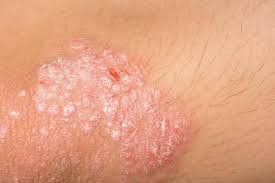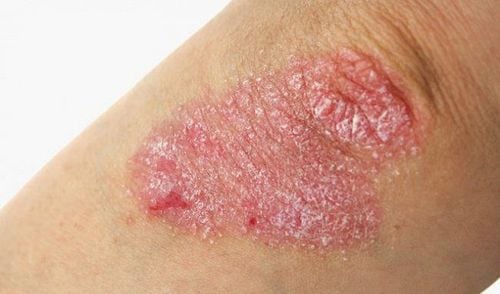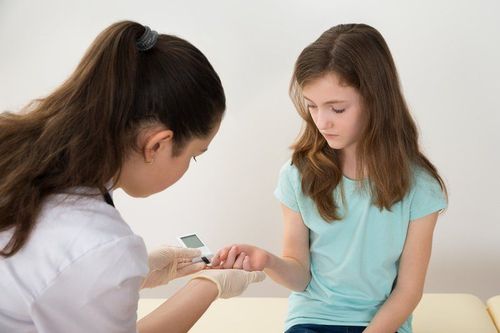This is an automatically translated article.
Idiopathic thrombocytopenic purpura is an immune disorder in which the blood does not clot as it should. This condition is now commonly known as immune thrombocytopenia (ITP).
1. What is immune thrombocytopenic purpura?
Platelets are produced in the bone marrow. They help stop bleeding by clumping together to form clots in the walls of blood vessels and tissues in small cuts or tears. If your blood doesn't have enough platelets, it will clot slowly, leading to external bleeding or bleeding under the skin. Immune thrombocytopenia can cause excessive bruising and bleeding. It is caused by abnormally low levels of platelets, or blood clots, that lead to immune thrombocytopenia. People with thrombocytopenic purpura often have many bruises called purpura on the skin or hemorrhages in the lining of the mouth. Certain viruses, such as chickenpox, mumps, and measles, can also lead to thrombocytopenia.
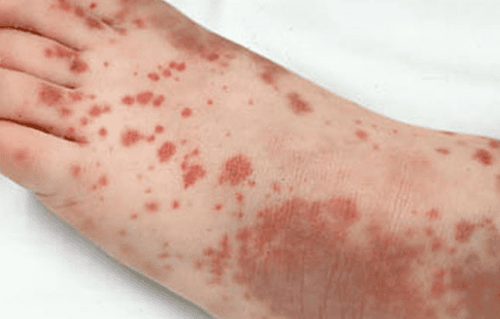
Xuất huyết giảm tiểu cầu miễn dịch do mức độ thấp bất thường của tiểu cầu dẫn đến giảm tiểu cầu miễn dịch
2. Types of thrombocytopenic purpura
There are two main types of thrombocytopenic purpura, acute (short-term) and chronic (long-term).
Acute thrombocytopenic purpura is the most common disorder in children. It usually lasts less than six months. Chronic thrombocytopenic purpura lasts six months or longer. It is most commonly noted in adults, although adolescents and young children can also be affected.
3. What causes thrombocytopenia bleeding?
The immune system plays an important role in the formation and progression of thrombocytopenic purpura
In thrombocytopenic purpura, the immune system produces antibodies against the platelets. These platelets are marked by a part of the body called the spleen for destruction and elimination, reducing the number of platelets. The immune system also seems to interfere with the cells responsible for platelet production, leading to a further decrease in the number of platelets in the blood.
In children, thrombocytopenic purpura usually develops rapidly after viral infection. In adults, thrombocytopenic purpura usually develops over time.
Thrombocytopenic purpura can also be primary or they are caused by an underlying disease (secondary). Autoimmune diseases, chronic infections, drug use, pregnancy, and some cancers are all predisposing factors to chronic thrombocytopenic purpura.

Virus là nguyên nhân gây ra xuất huyết giảm tiểu cầu ở trẻ em
4. What are the symptoms of thrombocytopenic purpura?
The most common symptoms of thrombocytopenic purpura are:
Easy bruising Petechiae of a specific size, usually in the lower legs Spontaneous nosebleeds Bleeding gums (eg, during procedures) (dental surgery) Blood in urine Blood in stool Unusually heavy and prolonged menstrual bleeding Prolonged bleeding from cuts Bleeding during surgery.
5. How is thrombocytopenic purpura diagnosed?
The doctor will perform a complete check of your condition. Along with that, the doctor will ask you about your medical history and the medications you are taking. Your doctor will also ask you to perform blood tests including a complete blood count. Blood tests may also include tests to evaluate liver and kidney function, depending on your symptoms. A blood test to check for platelet antibodies may also be ordered. Your doctor will smear your blood on a slide and examine it under a microscope to determine the amount and appearance of platelets observed in your blood sample. If you have a low platelet count, your doctor may also ask you to have your marrow checked. If you have thrombocytopenia, your bone marrow will be normal. This is because your platelets are destroyed in the blood and spleen after they leave the bone marrow. If your bone marrow isn't normal with a low platelet count, it's likely that you have something else other than thrombocytopenic purpura.
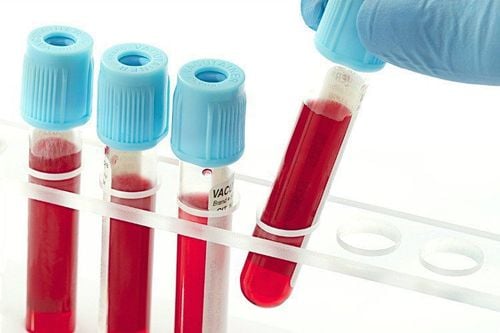
Xét nghiệm công thức máu toàn bộ giúp chẩn đoán xuất huyết giảm tiểu cầu
6. What are the treatments for thrombocytopenic purpura?
Your doctor will choose your treatment based on the total number of platelets measured in the test, how often the disease is present, and the amount of bleeding. In some cases, treatment is necessary. For example, children with acute thrombocytopenic purpura usually recover in six months or less without treatment.6.1 Drug treatment
The most common medications used to treat thrombocytopenic purpura include:
Corticosteroids: Increase your platelet count by decreasing the activity of the immune system. Intravenous Immune Globulin (IVIg): If your bleeding is severe, you will need surgery or are in need of a rapid increase in your platelet count, you may be given intravenous immune globulin (intravenous immunoglobulins). IVIG). Anti-D Immune Globulin: This treatment is for people with Rh-positive blood. Like IVIg therapy, it can quickly raise platelet counts, and it can work even faster than IVIg. However, it can have serious side effects, so this treatment should be used with caution. Rituximab (Rituxan): This is an antibody therapy that targets the immune cells responsible for the production of platelet-attacking proteins. Thrombopoietin receptor agonists: Thrombopoietin receptor agonists, including romiplostim (Nplate) and eltrombopag (Promacta), help prevent bruising and bleeding by making your bone marrow produce more platelets.
6.2 Antibiotic therapy
Helicobacter pylori is the bacteria that causes most stomach ulcers, which has been linked to thrombocytopenia bleeding in some people. Antibiotic therapy to eliminate H. pylori has been shown to increase platelet counts in some people.

Liệu pháp kháng sinh giúp tăng số lượng tiểu cầu ở một số người.
6.3 Surgery
If you have severe thrombocytopenia and medications do not improve your symptoms or increase your platelet count, your doctor may recommend surgery to remove your spleen.
Splenectomy is not usually performed in children due to concerns that treatment may not yield the desired results. Splenectomy also increases the risk of future infectious diseases caused by certain bacteria.
In addition, your doctor may also recommend that you make some lifestyle changes, including the following:
Avoid certain over-the-counter medications that can affect platelet function, including aspirin, ibuprofen (Advil, Motrin) and the blood thinner warfarin (Coumadin). Limit alcohol intake as it can adversely affect blood clotting. Choose gentle activities over competitive sports or other vigorous activities to reduce the risk of injury and bleeding. Any questions that need to be answered by a specialist doctor as well as customers wishing to be examined and treated at Vinmec International General Hospital, please book an appointment on the website to be served.
References: webmd.com, healthline.com
Please dial HOTLINE for more information or register for an appointment HERE. Download MyVinmec app to make appointments faster and to manage your bookings easily.
LEARN MORE
Diagnosis and treatment of immune thrombocytopenic purpura Immune thrombocytopenic purpura Mechanism of formation of immune thrombocytopenic purpura Symptoms and complications of immune thrombocytopenic purpura




